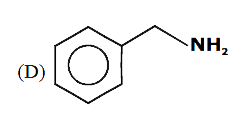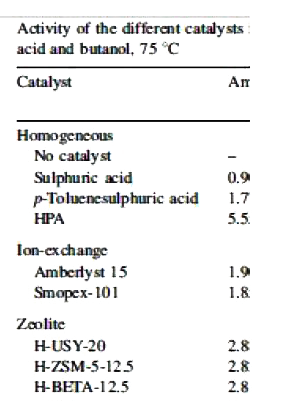Amines, Methods OF Preparation, Reactions (Gabriel Phthalimide, HOFfmann Bromide, Curtius, Schmidt, Nitro Compound), Chemical Properties, Carbonyl Amine Test, Libermann Nitroso Test, Heinsberg Reagent Test, HOFfmann Musturd Oil Test
Step by step video solution for Amines, Methods OF Preparation, Reactions (Gabriel Phthalimide, HOFfmann Bromide, Curtius, Schmidt, Nitro Compound), Chemical Properties, Carbonyl Amine Test, Libermann Nitroso Test, Heinsberg Reagent Test, HOFfmann Musturd Oil Test by Chemistry experts to help you in doubts & scoring excellent marks in Class 12 exams.
Updated on:21/07/2023Similar Questions
Chemical Properties OF Amines , Reaction with Alkyl Halide, Acylation Reaction, Reaction with Hinsberg Reagent, Hinsberg Test
View SolutionChemical Properties OF Amines || Reaction OF amine with Alkyl Halide || Acylation Reaction || Reaction OF amine with Hinsberg Reagent || Hinsberg Test
View Solution
Knowledge Check
Which of the following compound doesn’t gives Hoffmann’s carbyl amine test ?
A B
B C
C D
D
Nitrene-properties & preparation || Hoffmann bromamide reaction || curtius,schmidt & beckmann rearrangement || gabriel phthalimide reaction
View Solution(i) Illustrate the following reactions :
(a) Hoffmann bromamide degradation reaction.
(b) Coupling reaction.
(ii) Write a chemical test to distinguish between aniline and methylamine.
View Solution(a) Why is the secondary amine more basic than primary amine?
(b) Explain Hoffman mustard oil reaction.
(c) How is a primary amine distinguished from a secondary amine using a chemical test?
View SolutionGive one chemical test to distinguish between the following pairs of compounds :
Secondary and tertiary amines
View Solution(a) What happens when aniline reacts with bromine water at room temperature?
(b) Give a chemical test for primary amines.
(c) Write the diazotisation reaction of aniline.
View SolutionReaction OF Carbonyl Compound with Ammonia and Ammonia Derivatives ( i.e 2.4 DNP, Semicarbazide 1' - Amine, Hydrazine etc ) || 2.4 - DNP - Test || Clemensen Reduction
View SolutionRead the passage given below and answer the question:
Industrially widely applied esterification reactions are commonly catalysed using mineral liquid acids, such as sulphuric acid and p-toluenesulphonic acid. The catalytic activity of homogeneous catalysts is high. They suffer, however, from several drawbacks, such as their corrosive nature, the existence of side reactions, and the fact that the catalyst cannot be easily separated from the reaction mixture. The use of solid acid catalysts offers an alternative and has received a lot of attention in the past years. Solid acid catalysts are not corrosive and, coated onto a support, they can be easily reused. Examples of solid acid catalysts used in esterification reactions include ion-exchange resins, zeolites and superacids like sulphated zirconia and niobium acid. Ion-exchange resins are the most common heterogeneous catalysts used and have proven to be effective in liquid phase esterification and etherification reactions. Because of their selective adsorption of reactants and swelling nature, these resins not only catalyse the esterification reaction but also affect the equilibrium conversion. Shortcomings include insufficient thermal resistance, which limits the reaction temperature to 120∘C, preventing widespread use in industry. Zeolites, like Y, X, BEA, ZSM-5 and MCM 41 offer an interesting alternative and have proven to be efficient catalysts for esterification reactions. Zeolites have found wide application in oil refining, petrochemistry and in the production of fine chemicals. Their success is based on the possibility to prepare zeolites with strong Brønsted acidity that can be controlled within a certain range, combined with a good resistance to high reaction temperatures.
In this study, the activity of various commercial available solid acid catalysts is assessed with respect to the esterification of acetic acid with butanol. The ion-exchange resins Amberlyst 15 and Smopex-101, the acid zeolites H-ZSM-5, H-MOR, H-BETA and H-USY, and the solid superacids sulphated zirconia and niobium acid are selected. Comparative esterification experiments have been carried out using the homogeneous catalysts sulphuric acid, p toluenesulphuric acid and a heteropolyacid (HPA). The weight-based activity of the heterogeneous catalysts tested is maximum for Smopex 101. The following table gives the activity of different catalysts in the esterification reaction between acetic acid and butanol at 75∘C.

Here: kobs : observed reaction rate constant (m3mol−1s−1) kc catalysed reaction rate constant (m3mol−1g−1cats−1) Please note: k c = k obs/ amount (in g)
(source: PETERS, T., BENES, N., HOLMEN, A., & KEURENTJES, J. (2006). Comparison of commercial solid acid catalysts for the esterification of acetic acid with butanol. Applied Catalysis A: General, 297(2), 182-188. doi:10.1016/j.apcata.2005.09.00)
The catalytic activity of homogeneous catalysts is high. The weight based activity of HPA is less than which of the following heterogenous catalysts?
View Solution
